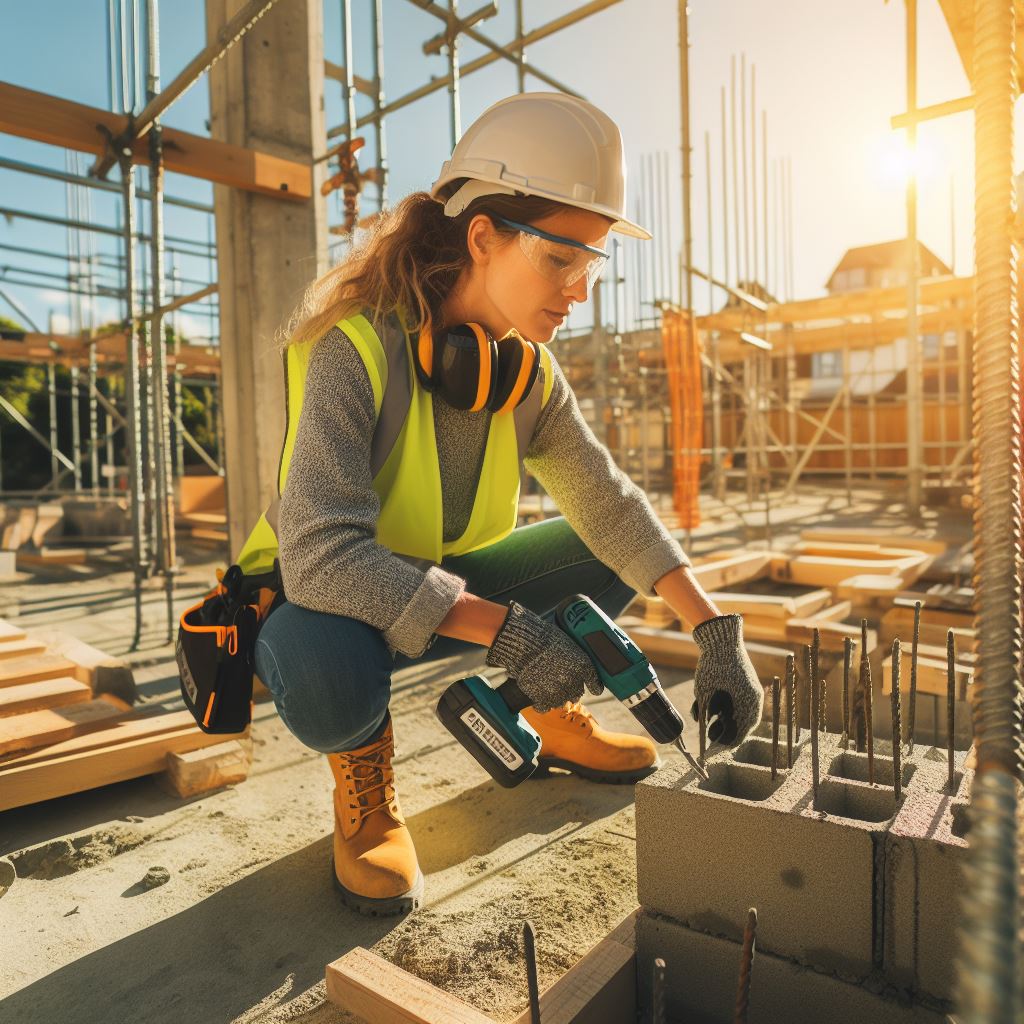Introduction
Selecting building materials is critical for construction projects in New Zealand, impacting durability, sustainability, and quality.
From homes to commercial buildings, material choices vary due to unique geographical and environmental factors.
Builders balance cost-effectiveness, energy efficiency, and environmental impact when choosing materials.
New Zealand’s building sector seeks innovative solutions to meet evolving needs and standards.
Local resources like timber and stone reflect the country’s natural heritage. Let, imported materials also serve modern construction demands effectively.
Builders weigh factors like availability, performance, and aesthetics in material selection. Eco-friendly options such as recycled timber and low-impact composites gain traction as sustainability rises.
Innovations in material science offer opportunities to enhance building performance and longevity.
Building codes in New Zealand ensure material safety, performance, and environmental sustainability. Seismic resilience and climate adaptability are crucial considerations for material selection.
The debate over building materials involves trade-offs among cost, durability, and environmental impact.
Local manufacturing reduces transportation emissions, contributing to the economy and sustainability.
Understanding material strengths and limitations empowers builders to make informed decisions. Our guide explores the pros and cons of various materials, aiding wise selection.
Each material—timber, concrete, steel—has unique advantages and applications in construction. Careful consideration of project requirements and environmental impact guides material selection.
Building materials shape New Zealand’s construction future, determining sustainability and resilience. Join us in discovering the best materials for sustainable and resilient structures.
Wooden Building Materials
Popularity and benefits of using wooden materials in NZ construction
Wooden materials have gained immense popularity in the construction industry in New Zealand. Contractors and homeowners alike prefer using wood due to its numerous benefits.
One of the main advantages of using wooden building materials is their durability. Wood can withstand various weather conditions and last for many years, making it an excellent choice for construction projects in NZ.
Personalized Career Consulting
Unlock your potential with expert career advice tailored to your goals. Get personalized guidance and actionable steps toward your dream career in New Zealand.
Get StartedIn addition to durability, wood is also known for its versatility. It can be easily shaped and molded to fit any design, allowing architects and builders to create unique and aesthetically pleasing structures.
The sustainability and eco-friendliness of wooden materials
Wooden materials are also highly sustainable and environmentally friendly. Wood is a renewable resource, meaning it can be replenished and harvested without causing significant harm to the environment.
Furthermore, choosing wood over other building materials helps reduce carbon emissions. Wood absorbs carbon dioxide from the atmosphere, acting as a carbon sink and mitigating the effects of climate change.
some specific types of wooden materials commonly used in NZ
Several specific types of wooden materials are commonly used in construction across NZ.
One popular choice is treated pine, which has been chemically treated to resist decay and insect damage. Treated pine is often used for exterior structures such as decking and fencing.
Another commonly used wooden material is Douglas fir. Known for its strength and durability, Douglas fir is frequently used for framing and structural support in buildings.
Cedar is another type of wood found in many constructions in NZ. It is prized for its natural resistance to rot and insect infestation, making it an excellent choice for exterior cladding and decking.
Additionally, native New Zealand timber like rimu and kauri are highly valued for their unique beauty and strength. These woods are often used for interior finishes, furniture, and flooring.
Apart from their popularity and versatility, wooden materials offer various benefits to both builders and homeowners.
Wood is an excellent insulator, providing natural warmth and reducing energy consumption for heating and cooling.
Wooden structures also tend to be more earthquake-resistant compared to other construction materials.
Wood’s flexibility allows it to absorb and disperse energy during seismic events, reducing the risk of structural failure.
Furthermore, wood has excellent acoustic properties, effectively reducing noise transmission within buildings. This makes it a favorable choice for residential and commercial projects where noise control is a priority.
Basically, wooden building materials have gained popularity in NZ construction due to their durability, versatility, sustainability, and eco-friendliness.
With a wide range of specific types of wood available, builders can create unique and beautiful structures while reducing their environmental impact.
Concrete Building Materials
Concrete is one of the most widely used building materials in the construction industry. Its popularity can be attributed to several advantages it offers over other materials.
In this section, we will explore the advantages of using concrete in construction, discuss its durability and longevity, and mention different types of concrete materials used in NZ construction.
Advantages of using concrete in construction
- Strength: Concrete is a highly durable material, capable of withstanding heavy loads and extreme weather conditions.
- Versatility: Concrete can be molded into any shape, making it suitable for various architectural designs and applications.
- Fire resistance: Concrete offers excellent fire resistance, which is crucial for building safety and protection.
- Cost-effective: Concrete is a cost-effective material in the long run due to its low maintenance requirements and long service life.
- Energy efficiency: Concrete possesses excellent thermal properties, providing insulation and reducing energy consumption for heating or cooling purposes.
Durability and longevity of concrete structures
Concrete structures are known for their exceptional durability and longevity. With proper maintenance, they can last for several decades or even centuries. The key factors contributing to their longevity are:
- Resistance to weathering: Concrete structures can withstand harsh weather conditions, including high winds, heavy rain, and extreme temperatures.
- Chemical resistance: Concrete is resistant to various chemicals, ensuring its durability in corrosive environments such as near the coast or industrial areas.
- Low maintenance requirements: Compared to other building materials, concrete requires minimal maintenance, reducing long-term costs and efforts.
Types of concrete materials used in NZ construction
- Normal concrete: This is the most commonly used type of concrete, composed of aggregates, cement, and water. It offers good strength and durability for general construction purposes.
- Reinforced concrete: Reinforced with steel bars or mesh, this type of concrete provides enhanced structural strength and can withstand higher loads.
- Precast concrete: Prefabricated in factories, precast concrete elements offer higher quality control and faster construction times. They are commonly used for walls, floors, and other structural components.
- Self-compacting concrete: With a high fluidity and ability to flow into intricate shapes, this type of concrete eliminates the need for excessive vibration during placement.
- Lightweight concrete: Incorporating lightweight aggregates, such as expanded clay or shale, this type of concrete offers reduced weight while maintaining adequate strength.
Therefore, concrete building materials provide numerous advantages in construction, including strength, versatility, fire resistance, cost-effectiveness, and energy efficiency.
Concrete structures are highly durable, with the ability to withstand weathering and chemicals, requiring minimal maintenance.
Different types of concrete materials, such as normal concrete, reinforced concrete, precast concrete, self-compacting concrete, and lightweight concrete, are widely used in NZ construction, catering to various project requirements.
Transform Your Career with a Professional CV and Cover Letter
Stand out to employers with an ATS-optimized resume and tailored cover letter designed to match your dream role. Let us craft your job application materials for success!
Get StartedRead: Residential vs Commercial: NZ Electrician Roles
Steel Building Materials
Steel is a construction material that offers exceptional strength and versatility, making it a popular choice among builders in New Zealand. It has numerous benefits and is widely used in various structures.
Strength and Versatility of Steel in Construction
One of the primary reasons why steel is preferred in construction is its remarkable strength.
It has a high tensile strength, which means it can resist heavy loads and withstand external forces like earthquakes or strong winds.
Additionally, steel is renowned for its versatility. It can be shaped and molded into various forms, allowing architects and engineers to create unique and innovative designs.
This flexibility makes steel an ideal choice for complex or unusual architectural structures.
Structural Benefits of Using Steel Materials
Using steel materials in buildings offers several structural benefits. Firstly, steel is lightweight compared to many traditional materials like concrete or wood.
This characteristic reduces the overall weight applied to the foundation and makes construction more efficient and cost-effective.
Moreover, steel has excellent durability, ensuring that the building will last for many years.
It can withstand harsh weather conditions, resist corrosion, and effectively support loads without sacrificing its structural integrity.
Another advantage of using steel is its fire-resistant properties. Steel is non-combustible, making it significantly safer in the event of a fire.
This characteristic is especially crucial in high-rise buildings, enhancing the overall safety of the structure and its occupants.
Specific Steel Products Commonly Used in NZ Buildings
In New Zealand, several steel products are commonly used in building construction. These products offer unique features and advantages that contribute to the overall strength and stability of the structures.
One such product is steel reinforcement bars, also known as rebars. These bars provide extra strength to concrete by improving its tensile strength.
Reinforced concrete is widely used in various building components like beams, columns, and slabs.
Another commonly used steel product is structural steel beams. These beams are crucial in supporting the weight of the building, transferring loads to the foundation.
They are often used in the construction of floors, roofs, and bridges due to their high load-bearing capacity.
Moreover, steel roofing systems are popular in New Zealand. Steel roof panels are highly durable, lightweight, and provide excellent resistance against extreme weather conditions.
They offer an energy-efficient solution while enhancing the aesthetic appeal of the building.
Steel framing systems, such as steel studs and tracks, are also widely used in interior construction.
These components provide structural support for walls, ceilings, and partitions. Steel framing is known for its precision, strength, and ease of installation.
Additionally, steel cladding is commonly used in commercial and residential buildings.
Steel cladding panels are available in different textures and finishes, adding an attractive appearance to the exterior while ensuring protection and durability.
Generally, steel is an exceptional building material due to its strength, versatility, and numerous structural benefits.
Several specific steel products, including reinforcement bars, structural beams, roofing systems, framing systems, and cladding, are commonly used in construction projects throughout New Zealand.
When it comes to building materials, steel remains a top choice for its reliability, durability, and aesthetic appeal.
Boost Your Career with a Standout LinkedIn Profile
Attract recruiters and expand your network with a fully optimized LinkedIn profile tailored to highlight your strengths and professional goals. Let your profile open doors to new opportunities!
Get OptimizedRead: The Impact of Technology on NZ Electricians

Alternative Building Materials
In recent years, there has been a growing interest in alternative building materials in New Zealand.
These materials offer an array of benefits and features, making them an attractive option for both builders and homeowners.
Let’s explore some of the alternative building materials gaining popularity in NZ and discuss their pros and cons.
Rammed Earth
Rammed earth is an ancient technique gaining popularity in modern construction. It involves compressing a mixture of soil, gravel, and cement into solid walls.
The natural composition of rammed earth provides excellent insulation and thermal mass properties.
- Pros: Energy-efficient, durable, fire-resistant, low maintenance, and aesthetically pleasing with a unique texture.
- Cons: Requires skilled labor, time-consuming, and limited design flexibility due to load-bearing characteristics.
Straw Bale
Straw bale construction utilizes bales of straw tightly stacked between a structural framework. This results in thick, well-insulated walls that are both environmentally friendly and affordable.
- Pros: Excellent insulation properties, renewable and sustainable, soundproofing capabilities, and fire-resistant when properly coated.
- Cons: Vulnerable to moisture if not protected, limited availability of straw bales in some regions, and potential pest issues if not properly sealed.
Hempcrete
Hempcrete is a composite material made from the woody core fibers of industrial hemp mixed with a lime-based binder. This lightweight material offers excellent thermal performance and is increasingly used in NZ.
- Pros: Good insulation properties, moisture-regulating, fire-resistant, lightweight, and carbon-negative due to hemp’s ability to absorb CO2.
- Cons: Requires careful installation to prevent cracking, limited availability of hemp fibers, and higher upfront costs compared to traditional materials.
Shipping Containers
Repurposing shipping containers as building structures has become a popular trend worldwide, including in NZ. These sturdy and versatile metal containers offer unique design possibilities.
- Pros: Cost-effective, structurally sound, easily transportable, customizable, and relatively quick construction process.
- Cons: Limited living space if not combined, potential issues with insulation and condensation, and modification restrictions in some areas due to building codes.
Cross-Laminated Timber (CLT)
CLT is a wood-based panel product made by layering perpendicular timber boards and bonding them with adhesive. This material provides a sustainable and viable alternative to traditional building methods.
- Pros: High strength and stability, shorter construction time, renewable and biodegradable, reduced carbon footprint, and excellent thermal insulation.
- Cons: Limited availability and higher cost compared to conventional framing materials, susceptible to moisture and fire (unless properly treated), and potential noise transmission.
In general, alternative building materials offer unique advantages and innovative features that appeal to those seeking sustainable and energy-efficient solutions.
However, it is essential to weigh both the pros and cons when considering these materials for a construction project.
While some alternative materials require specialized skills and may have limitations, they can provide long-term benefits in terms of durability, affordability, and environmental impact.
As the demand for sustainable construction continues to grow, exploring alternative building materials becomes increasingly important in New Zealand and beyond.
Read: Apprenticeships in Electrical Work: NZ Focus
Comparison and Factors to Consider
Comparison of Wooden, Concrete, and Steel Materials
- Wooden materials are commonly used, offer natural aesthetics, but require regular maintenance.
- Concrete materials are durable, fire-resistant, but may crack and require skilled labor.
- Steel materials are strong, recyclable, but susceptible to corrosion and may be expensive.
Key Factors to Consider When Choosing Building Materials
- Cost: Evaluate the upfront and long-term costs of materials, including maintenance and repairs.
- Sustainability: Consider the environmental impact, energy efficiency, and recyclability of materials.
- Durability: Assess the lifespan and resistance to weather, pests, decay, and wear and tear.
- Aesthetics: Determine the desired appearance and style of the building.
- Functionality: Consider the specific requirements and purpose of the structure.
- Availability: Evaluate the accessibility and availability of materials in the local market.
When deciding on the best building material for your project, several aspects need to be taken into account.
Cost
The cost of materials plays a crucial role in determining the feasibility of a building project.
Wooden materials, although affordable initially, may incur expensive maintenance costs over time.
Concrete materials offer a balance between affordability and durability. Steel materials tend to be more expensive but provide long-term savings due to their reliability.
Sustainability
With environmental concerns on the rise, it is important to choose materials that are sustainable. Wooden materials come from renewable sources but require careful forest management.
Concrete materials have a higher carbon footprint during production, but their thermal properties can enhance energy efficiency.
Steel materials are highly recyclable and can minimize waste during construction.
Durability
Durability is vital to ensure the longevity and safety of a building. Wooden materials can be susceptible to rot, pests, and weather damage if not properly maintained.
Concrete materials are highly durable against fire, weather conditions, and pests, but may crack over time.
Steel materials can withstand extreme conditions but are prone to corrosion if not protected.
Aesthetics
The visual appeal of a building material is often a crucial consideration. Wooden materials provide a warm and natural look, suitable for traditional and rustic designs.
Concrete materials offer a modern and industrial appearance, appropriate for contemporary architecture.
Steel materials provide a sleek and versatile aesthetic, suitable for both classic and modern designs.
Functionality
The intended purpose of the structure should be considered when choosing building materials. Wooden materials offer flexibility and are ideal for lightweight constructions.
Concrete materials provide excellent structural integrity and are suitable for large-scale projects.
Steel materials offer high strength and can span long distances, making them suitable for commercial and industrial applications.
Availability
When selecting building materials, it is important to consider their availability in the local market.
Wooden materials are widely accessible, while concrete and steel materials may require specific suppliers and skilled labor.
Evaluating availability helps avoid project delays and additional expenses associated with transportation and importation.
Essentially, the choice of building materials depends on various factors, including cost, sustainability, durability, aesthetics, functionality, and availability.
Each material has its own advantages and disadvantages, and it is essential to evaluate these aspects based on the specific requirements of the project.
By carefully considering these factors, you can make an informed decision and select the best building materials for your construction endeavor.
Read: Women in Electrical Trades: NZ’s Growing Trend
Conclusion
Importance of selecting the right building materials in NZ
In closing, selecting the right building materials in NZ is crucial for various reasons. The materials chosen can impact the durability, energy efficiency, and aesthetic appeal of a building.
Encourage them to consider their specific project needs and consult professionals for advice
It is essential for readers to consider their specific project needs before making any decisions.
Consulting professionals in the industry can provide valuable advice and guidance to ensure the right materials are chosen.
A final thought or concluding remark related to the topic
Remember, the quality of building materials will determine the long-term performance and sustainability of a structure.
Therefore, it is always wise to invest in materials that are of high quality and suitable for the particular project requirements.
Lastly, building with the right materials not only adds value to the property but also contributes to the overall well-being and comfort of its occupants.
It brings satisfaction and pride to the homeowners while promoting a greener and more sustainable future for NZ’s construction industry.




